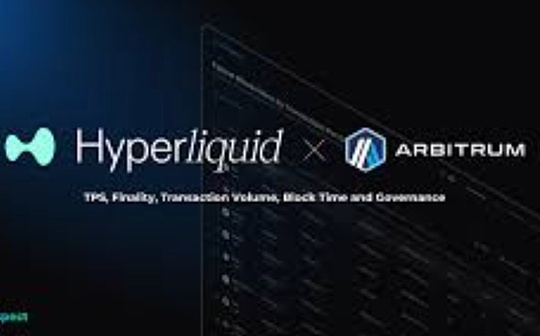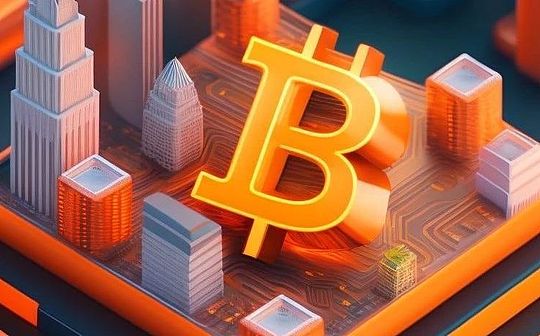
Author: Greythorn Asset Management, compile: vernacular blockchain
As the earliest blockchain with the largest market value, Bitcoin not only led the development of digital assets, but also continued to dominate the market in terms of market value.However, Bitcoin, which is currently regarded as “digital gold”, is mainly recognized as a means of value storage, not its role in decentralized applications.
However, recent development has shown that Bitcoin’s potential for building active decentralized finance (DEFI) ecosystems is greater than previously expected.This change takes place in the context of the market’s interests and technical capabilities.

SEC approves Bitcoin ETFs listed on all registered securities exchanges and will continue to supervise it to protect investors.Source: x.com
In the next few years, it may be important for Bitcoin because it may change from a passive value storage method to an active ecosystem full of innovation and investment opportunities.We believe this is an opportunity worth exploring, especially considering that most people have not invested in this emerging ecosystem, and some new features, such as Runes, are about to launch.
This will be the first time that people can directly invest in the bull market on the Bitcoin blockchain and assets.These assets are expected to profit with the rise in Bitcoin prices. When people sell Bitcoin, profits will gradually appear.This article will focus on the potential opportunities that Bitcoin may bring in the future.
01Bitcoin ecosystem
The core code of the Bitcoin Agreement has been almost unchanged for many years, mainly for the medium of transactions.In 2017, the Bitcoin Agreement implemented the SEGWIT upgrade to separate the digital signature (“witness”) from the transaction data.This separation effectively releases space, so that more transactions can be included in the blockchain.
Subsequently, in 2021, Taproot upgrades were introduced.This improvement allows a combination of multiple signatures and transactions to promote the aggregation of the signature.In essence, this means that multiple signatures can be combined together to verify.Despite these upgrades, Bitcoin still faces challenges such as scalability, slow transaction speed and high cost.
At present, the Bitcoin network includes miners, nodes, stakeholders, developers, and various second -level solutions, side chains and DApps.Miners and nodes maintain the network by verifying transactions and ensuring consensus, which is realized through the workload proof mechanism (POW).The developer community contributes to expanding the local ecosystem and occasional core protocol updates, because these updates may be difficult to reach consensus, so they change less.The following is a brief overview form of the Bitcoin ecosystem:
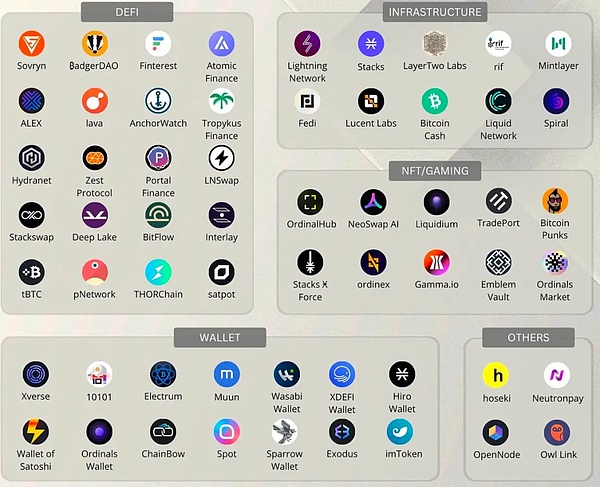
02Layer2 solution
In response to the scalability of Bitcoin, multiple solutions have been proposed, but the vast majority of Bitcoin users depending on the workload certificate (POW) is the core part of Bitcoin identity, and is usually unwilling to support major changes to the agreement to change major changesEssence
Nevertheless, the Layer2 solution provides a more practical method because they do not involve major modifications to the core blockchain.These solutions are stacked on the Bitcoin main network as an independent blockchain, making it easier to achieve and more realistic solution to scalability.
The following are three main participants:
1) The Lightning Network
Launched in 2016 is the first second -level payment agreement developed on the Bitcoin blockchain. It aims to increase transaction speed and reduce costs, and use Bitcoin’s smart contract function to achieve close -up payment.Although the Lightning Network has successfully improved the transaction efficiency and attracted more than 347 million US dollars (as of July 31), the total lock value (TVL), it did not provide a high -level smart contract function required to develop diversified DAPP ecosystems, andFocus on its point -to -point payment network capabilities.
 Source: Lightning Network
Source: Lightning Network
2) Stacks
Stacks is the current market leader and has completed the Nakamoto upgrade on July 13, which can significantly improve security and speed.Stacks was founded by computer scientist Muneeb Ali in Princeton in 2013. He studied this technology for four years.In addition, the project also has an extremely excellent team, and its technology has been reviewed by experts from Stanford and Princeton.
STACKS enables smart contracts and DAPP to use Bitcoin as assets and settlement transactions on the Bitcoin blockchain. All transactions on the Stacks layer are automatically settled and settled on Bitcoin.
3) BVM network
Through its LAYER2 yuan agreement, Bitcoin’s smart contract and scalability restrictions can be resolved.BVM supports the creation of DAPP and smart contracts, and promotes the expansion of Bitcoin Layer2 blockchain.At present, BVM is the rise as a leading solution on the chain, especially during the recent market downturn.Its relatively strong performance shows potential growth, especially in the context of rising interest in Bitcoin Layer2 solution.
As a Rollup-As-A-Service (RAAS) protocol, BVM allows users to easily start the new Bitcoin L2 blockchain, and all values return to BVM token holders because the new Layer2 continues to pay with BVM token.Notable progress includes the Tuna chain and Naka chain launched by BVM SDK.In addition, the plan to integrate the Runes function heralds the further growth of BVM.
 BVM has re -used the Optimism code library that has been tested in actual combat.It is a modified version of OP Stack, adding support for Bitcoin.The software stack includes data verification, data storage selection, smart contract platform (Bitcoin virtual machine), and the upcoming decentralized sorter.Source: BVM
BVM has re -used the Optimism code library that has been tested in actual combat.It is a modified version of OP Stack, adding support for Bitcoin.The software stack includes data verification, data storage selection, smart contract platform (Bitcoin virtual machine), and the upcoming decentralized sorter.Source: BVM
Several other extension solutions have been developed for smart contracts on Bitcoin:
RGB:In the lower level of the chain, the UTXO of Bitcoin uses the UTXO of Bitcoin to create digital assets, such as Token and NFT, which is fully compatible with the Lightning Network.
Counterparty:Allow token creation and crowdfunding; it has been revived through innovation like Ordinals.
Rootstock (RSK):A side chain that combines mining, supports smart contracts compatible with Ethereum virtual machine (EVM), uses RBTC linked to Bitcoin.
Liquid network:The side chain launched by Blockstream support decentralized transactions and asset issuance, including NFT and stablecoins.
Omni layer:Support Token casting and DEX; the transaction speed of the lightning network is enhanced through Omni Bolt.
Mintlayer:PROOF of Stake and Bitcoin’s workload proof (Proof of Work) are combined on a side chain to support smart contracts and cross -block chain transfer.
03DEFI on Bitcoin
Ethereum has always been Defi’s preferred Layer1 blockchain.However, recent development may make Bitcoin an important player in the mainstream DEFI adoption.With the changes in the United States, the expectations of Bitcoin in 2024, and the introduction of Bitcoin Ordinals, Bitcoin is gradually getting more possibilities.
The Bitcoin network is beyond simple trading functions, and the roads are paved with various extension solutions for rich Defi ecosystems.This development has spawned projects that support more complex financial applications, challenging the dominant position of Ethereum.
For example, SOVRYN provides a non -custodian, no license environment on Bitcoin -based Layer2 EVM smart contract blockchain RSK, for trading, borrowing and destructive Bitcoin and other selective assets.
In addition, Zest Protocol is supported by Primal Capital and is creating Bitcoin -based point -based decentralized borrowing.At the same time, Bitcoin DEX, such as BISQ Network, runs under the decentralized autonomous organization (DAO) to support point -to -point transactions.
04Ordinals and Runes
Although the Runes Agreement has paid widespread attention before, many people still don’t know how to use UTXO accounting to simplify Bitcoin transactions.Compared with traditional methods such as Unisat market, runes provide more economical entry points.Prior to this, Bitcoin transactions were mainly managed through account models and needed specific transactions. Compared with the token transaction on Ethereum, the user experience was poor.
Runes created by the founder of Ordinals intends to become the Ethereum ERC20 of the Bitcoin version, which is convenient for distribution to replacement tokens.The agreement is launched on April 19 after Bitcoin halved, which may increase trading costs on Bitcoin Layer1 and may promote the activity of the Bitcoin Layer2 solution.
Ordinals stores data in transaction testimony and attach information to a single Satoshi.Different from Ordinals,Runes records Token into UTXOS embedded in Bitcoin.This method can seamlessly connect the existing system of Bitcoin, improve the integrity of its functionality and blockchain, and specially designed to easily implement it on various Layer2 platforms (such as Stacks).
Here are some key items related to the Runes protocol:
PUPS / RUNE PUPS:This is a NFT series that will distribute a 23%PUPS supply by AirDrop after the post-runes activation.
Wzrd:This is the early cultural Token in the Ordinals ecosystem, which has grown rapidly.
Runstones:The project will be transformed into Runes token after halving Bitcoin.It has been collected by AirDrop to multiple Ordinals, including Bitcoin Puppets.
When you buy the BRC20 Token, you are actually a BRC20S that can be converted to Runes equivalent after halving.With the launch of the ecosystem, there will be more similar items, please keep attention.
The viewing view of related Runes is as follows:
Bitcoin replacement innovation:Runes introduces a new Token standard on the Bitcoin blockchain, which aims to improve the current BRC-20 replace the token standard.This innovation is considered enough to promote the re -evaluation of Bitcoin’s potential in the field of decentralized applications.
Efficiency and design:The Runes Token standard is more efficient by using UTXO -based design.This is different from the account design of Bitcoin’s BRC-20 and Ethereum ERC-20 Token, which may reduce the expansion and high costs brought by the ‘garbage’ UTXO creation in the current process.
Market positioning:The market value of Bitcoin’s replacement of the token market is relatively small, compared with Ethereum and Solana.Nevertheless, the introduction of more efficient Token standards such as Runes may help shrink this gap.
Compatibility and privacy:Runes is designed to be compatible with Lightning Network and promises to provide higher privacy because data is hidden in UTXOS.This compatibility and privacy characteristics are considered an important improvement in existing standards, which may make Bitcoin a more attractive platform in the DEFI field.
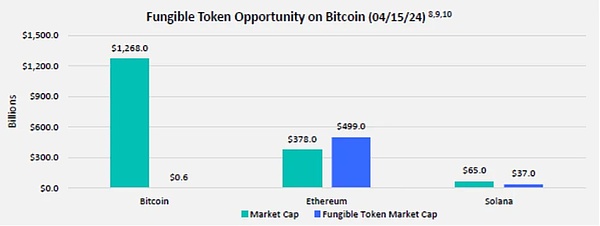
The most potential of homogeneity token on Bitcoin is the most potential, source: Franklin Templeton
05RGB ++
RGB ++ enhances the function of Bitcoin by integrating smart contracts to NERVOS CKB blockchain.The highlight of RGB ++ is its homogeneous binding (Isomorphic Binding),It implements the asset management synchronization of the asset management between Bitcoin and CKB Nervos blockchain.In actual operation, each Bitcoin UTXO (without cost transaction output) is binded together with the corresponding Cell (which can be understood as “block”) on the CKB blockchain.Therefore, when using UTXO for Bitcoin transactions, the transaction will automatically record on the CKB blockchain, and the corresponding Cell on CKB will be updated.
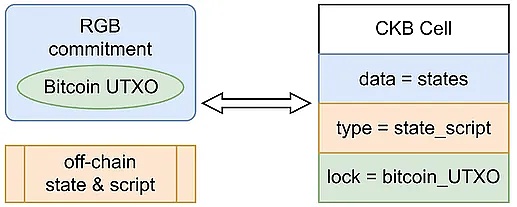
Synchronization diagram of asset management between the asset management between the RGB Bitcoin and the CKB NERVOS blockchain
The system does not require a third -party multi -signature bridge, which can realize non -trust cross -chain transactions, while ensuring accurate mapping on the two networks.RGB ++ is considered a promising Bitcoin Layer2 solution.
In terms of investment, the token related to RGB ++ is CKB, and its market value has reached $ 1.5 billion (as of July 31), and more than 99%of the token has circulated.This reduces concerns about the impact of the new Token distribution on the market.
06Conclusion
The amount of information is very large, and it may be a bit complicated to understand.But the Bitcoin ecosystem is worthy of attention, because Bitcoin still has the highest adoption rate among all cryptocurrencies and is recognized by individuals and institutional investors, which may bring more stability and growth potential.
Due to the continuous development of Lightning Network (speeding up transaction speed) and measures like Runes (Runes) (alternative to the token), Bitcoin is constantly improving and expanding its applications.

